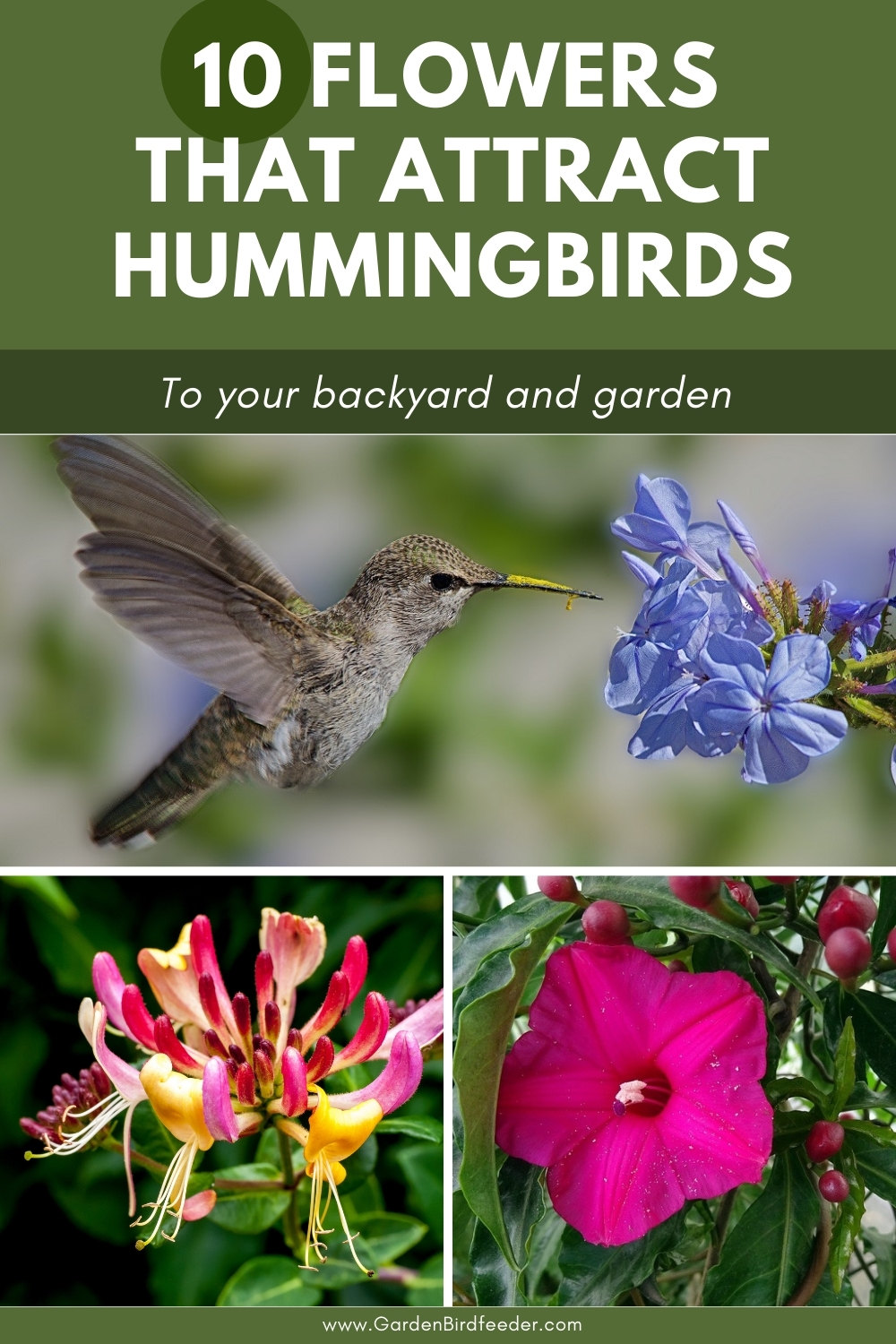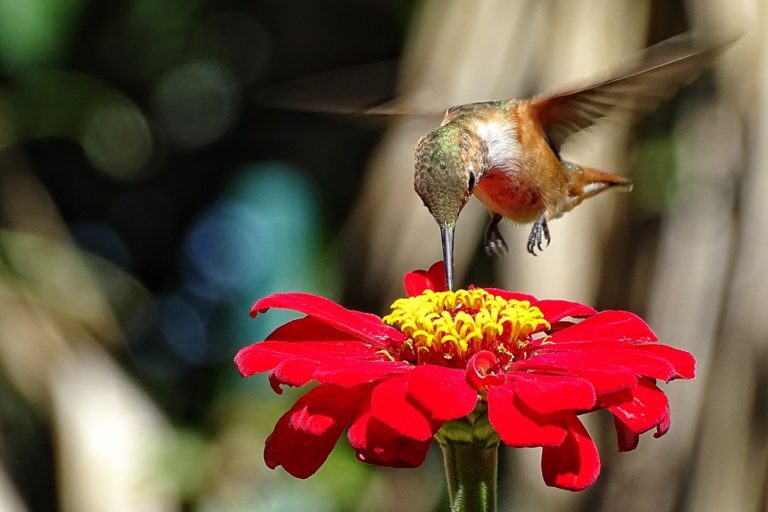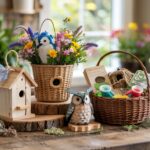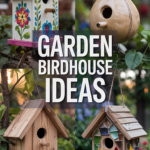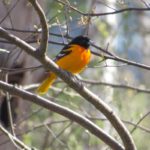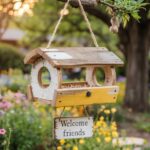On almost any bright summer morning, you might be surprised by something fast buzzing by your ear. No, it’s not a bee, it’s a hummingbird. Sometimes called jewels of the sky, these tiny birds love flowers that produce large amounts of nectar.
You can encourage them to visit your garden by planting hummingbird flowers. They love monardas, honeysuckle, sage, and hyssop, or any flower that produces a lot of nectar. Many of these plants are easy to grow and fit right in with herb gardens designed to attract bees and butterflies.
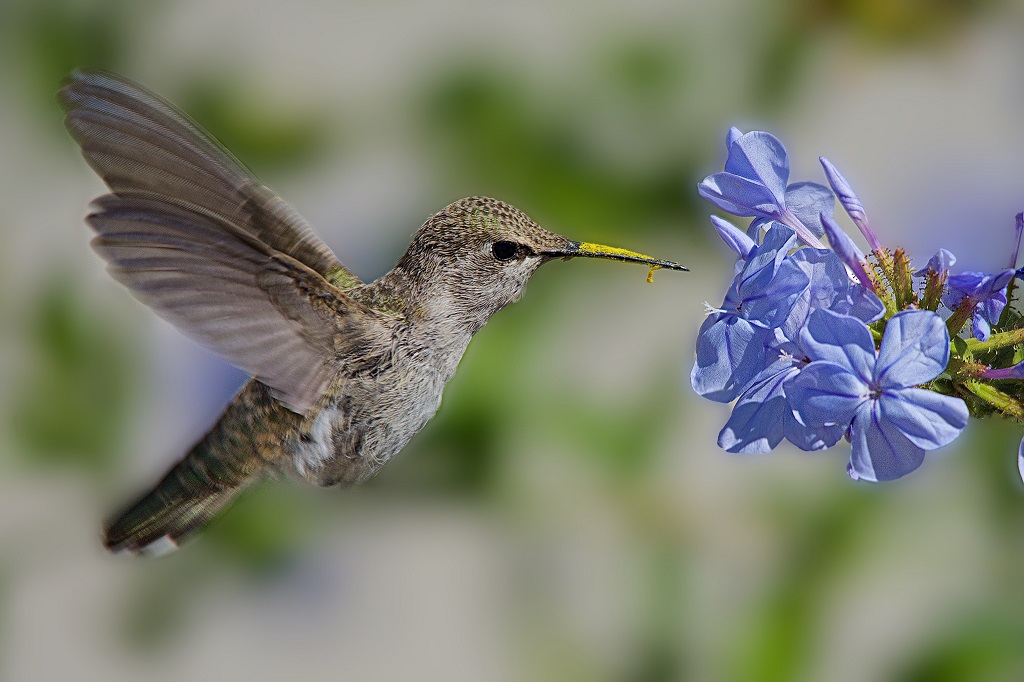
To avoid introducing invasive plant species, select plants that are native to your area. There are many species of herbs and ornamentals that will attract hummingbirds to your yard, so there are good plants for hummers that can grow in almost any location. Here are a few examples to help you get started.
Some Plants for your Hummingbird Garden
Here are some of our favorite flowers that attract hummingbirds. We’ve chosen a range of flowers that grow well in both full sun or partial shade. Always check your growing zone to be sure each flower will do well in your area before planting.
1. Bee Balm
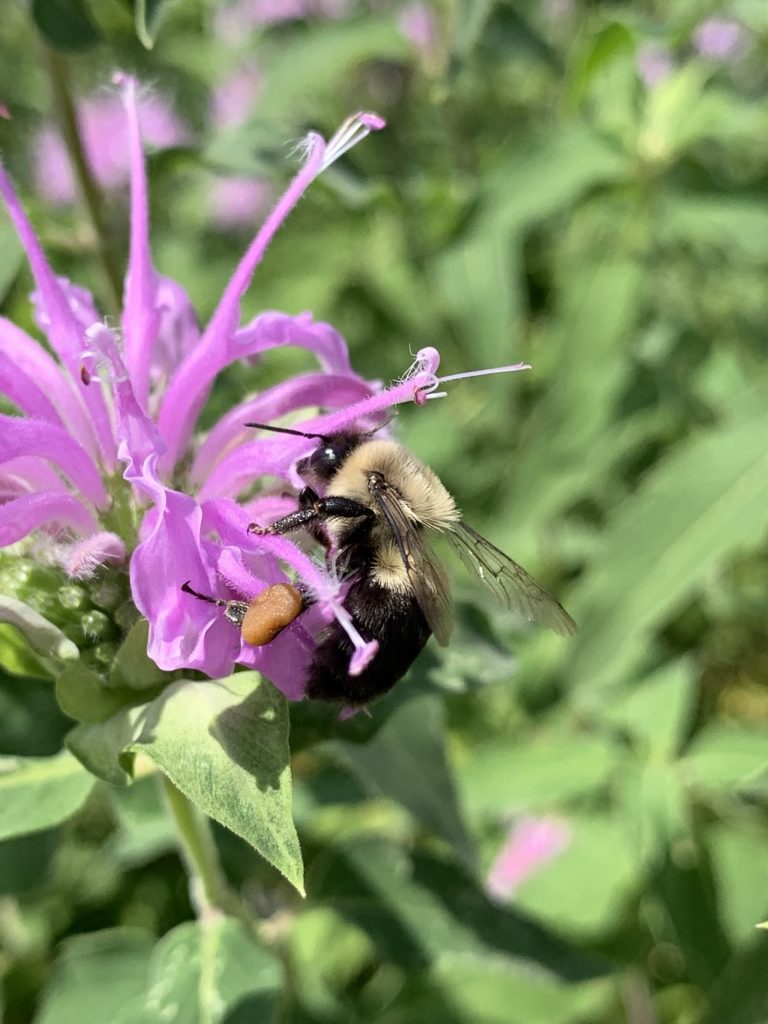
Growing Conditions
- Full Sun
- Perennial
- 4 feet tall
A member of the Monarda branch of the mint family, and much loved by both bees and hummingbirds. Finches are also attracted to bee balm after it goes to seed.
It likes full sun, well-composted soil, and moderate water. Plant in groups to create a mass planting and make a statement in the garden. Bee Balm is available in a variety of colors, including pink, purple, red, and white.
2. Cardinal vine
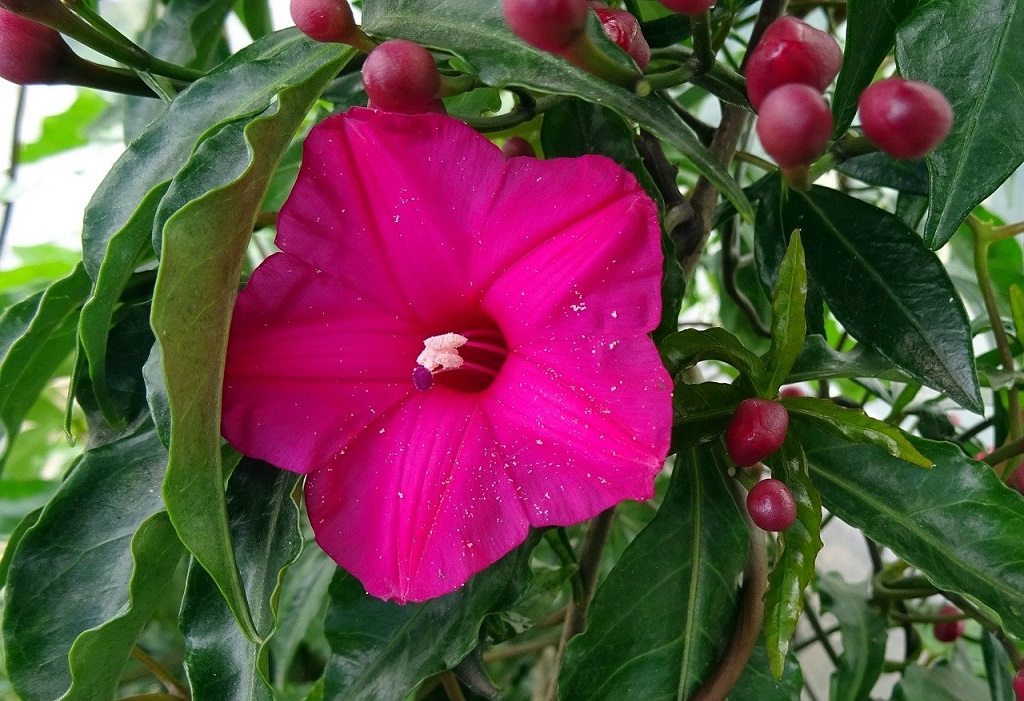
Growing Conditions
- Full Sun
- Climbing vine
- 6 to 12 feet tall
Cardinal vine – or cardinal climber, as it is sometimes known, is a delicate vine with lacy leaves and small, trumpet-shaped red blossoms. While technically a perennial, it might be considered an annual farther north.
Flowering vines are a favorite for attracting hummingbirds since they put out abundant flowers at an easy to reach height.
3. Cannas
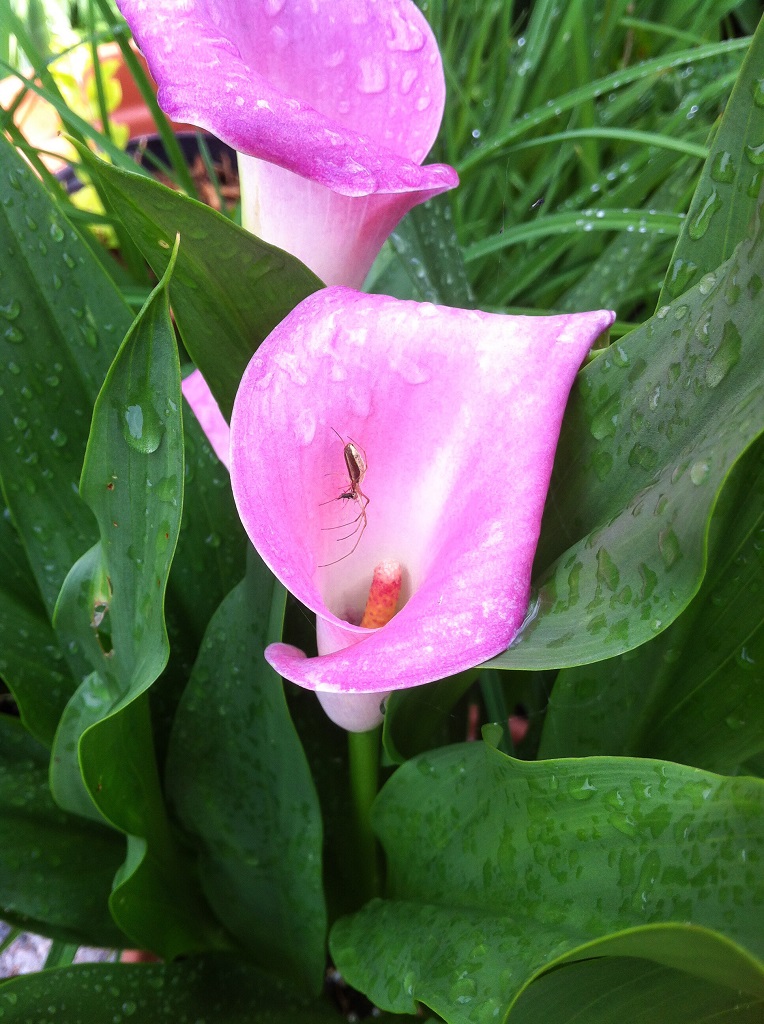
Growing Conditions
- Full Sun
- Moist Soil
- 1 to 10 feet tall
- Perennial Growing from Bulbs
Grown from bulbs or rhizomes that must be dug up in the fall in northern areas. Cannas can overwinter successfully in zones 9 or 10.
They are tall, showy flowers with broadleaf foliage. They make a great background for smaller plants. Dwarf varieties can be grown successfully in containers.
4. Catmint
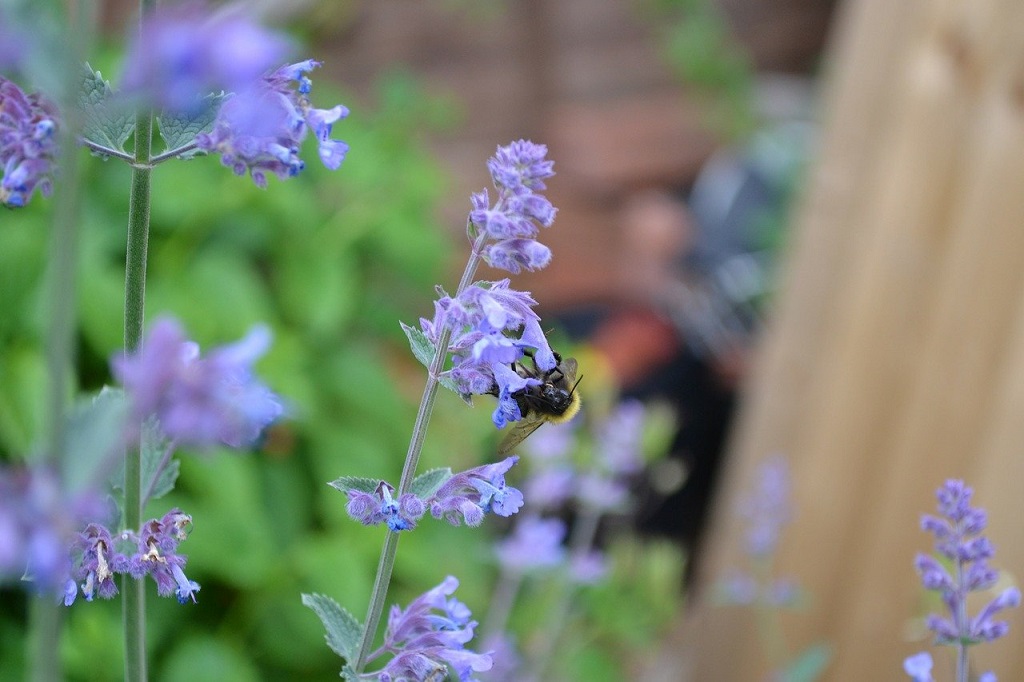
Growing Conditions
- Full Sun to partial shade
- 9 to 36 inches tall
- Heat and Drought Tolerant
A member of the nepeta family, which is a type of mint. It can be an aggressive grower, so give this garden favorite plenty of room to spread. It has showier blooms than its cousin, catnip. It still might attract neighborhood cats who like its scent.
While catmint is a great flower to attract hummingbirds, bees and butterflies will also flock to it in the summer months. This is a grant plant to attract pollinators.
5. Coneflowers
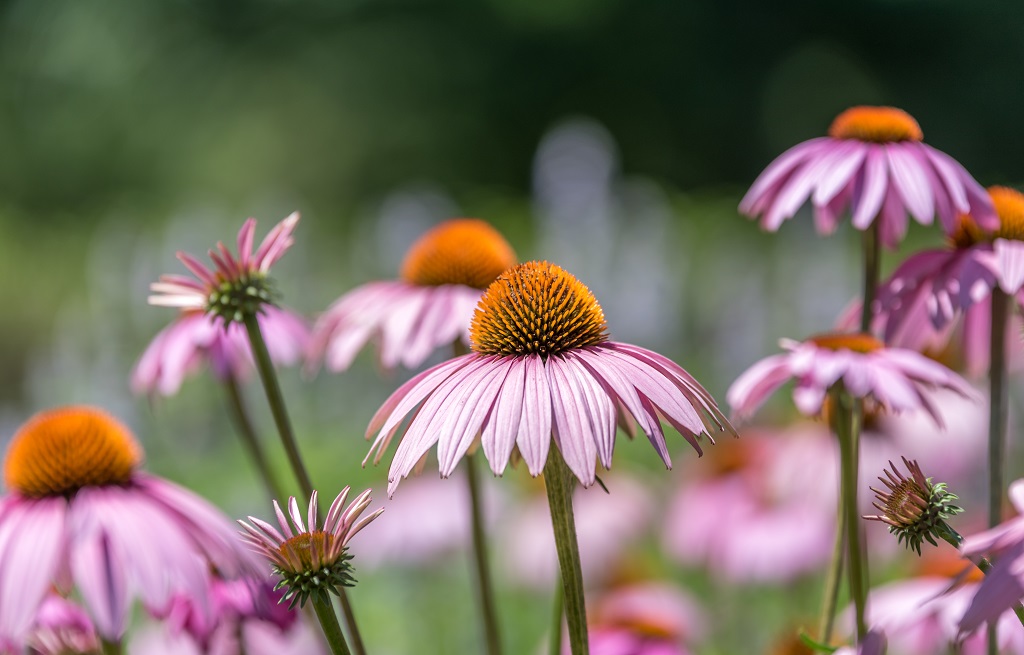
Growing Conditions
- Full Sun
- Perennial in zones 3 to 8
- 24 to 36 inches tall
As the name implies, the blossoms form a conical shape in the center of the petals. Native to the US prairie, they are drought resistant and have been hybridized to come in a wide range of colors.
A mass of these against a garden fence makes a beautiful showing and will be lively all summer with bees, butterflies, and hummingbirds. Let this one go to seed and you will also attract songbirds like the goldfinch,
6. Holly Hocks
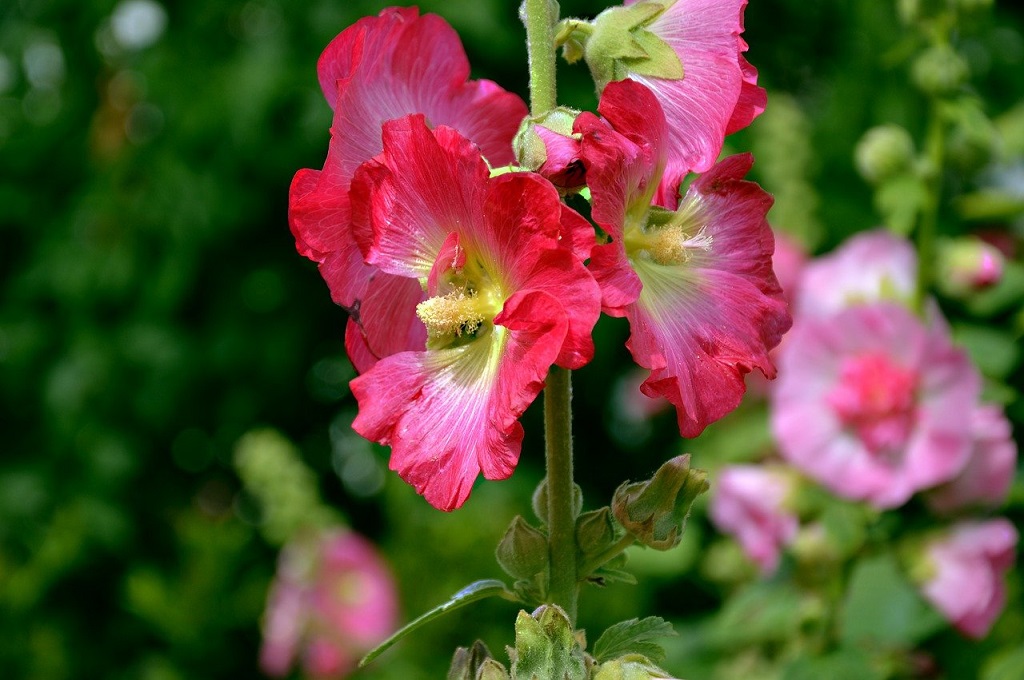
Growing Conditions
- Full Sun
- Biennial
- Up to 8 feet tall
These old-fashioned biennials grow to nearly six or seven feet tall in summer, putting on myriad bright blooms. They are much loved by bees and hummingbirds.
They bloom in their second year of growth, producing seeds at the base of the flower. Once established, they will grow from the root and reseed themselves generously. Like coneflowers, they are drought resistant.
7. Honeysuckle
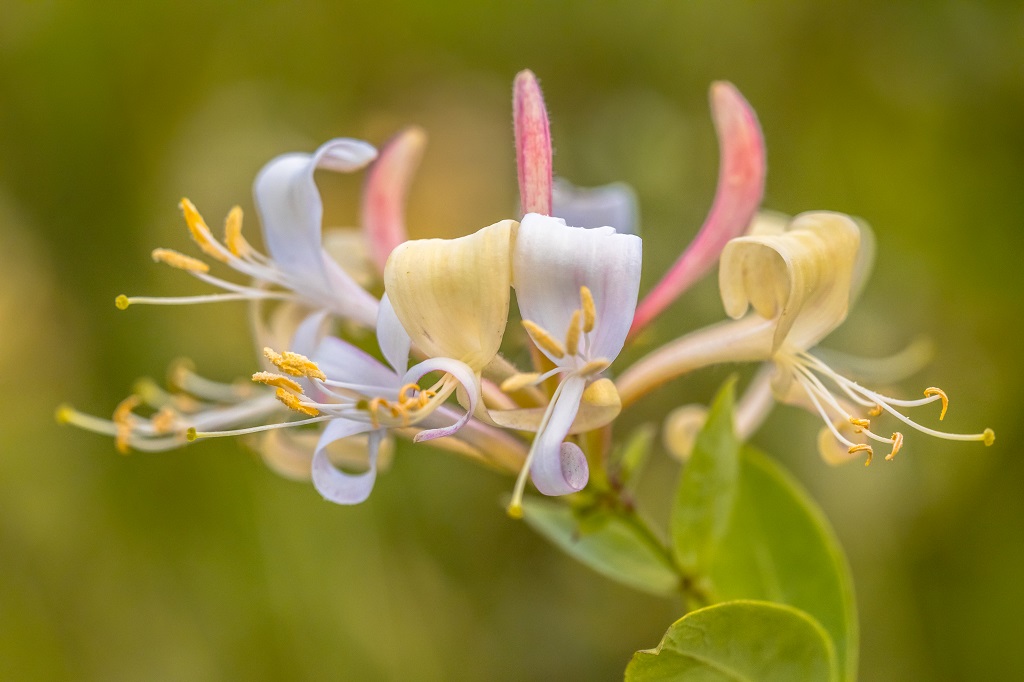
Growing Conditions
- Full Sun, but will tolerate light shade
- Climbing vine
- Perennial
Honeysuckle is a favorite flower to attract hummingbirds, but plant this one with caution. It has a spreading habit and can be invasive in some areas.
Its scent makes it almost worthwhile, and bees, butterflies, and hummingbirds love it. If you want to grow some, put it in a tub or similar container to restrain its wandering.
8. Rose of Sharon (Althea)
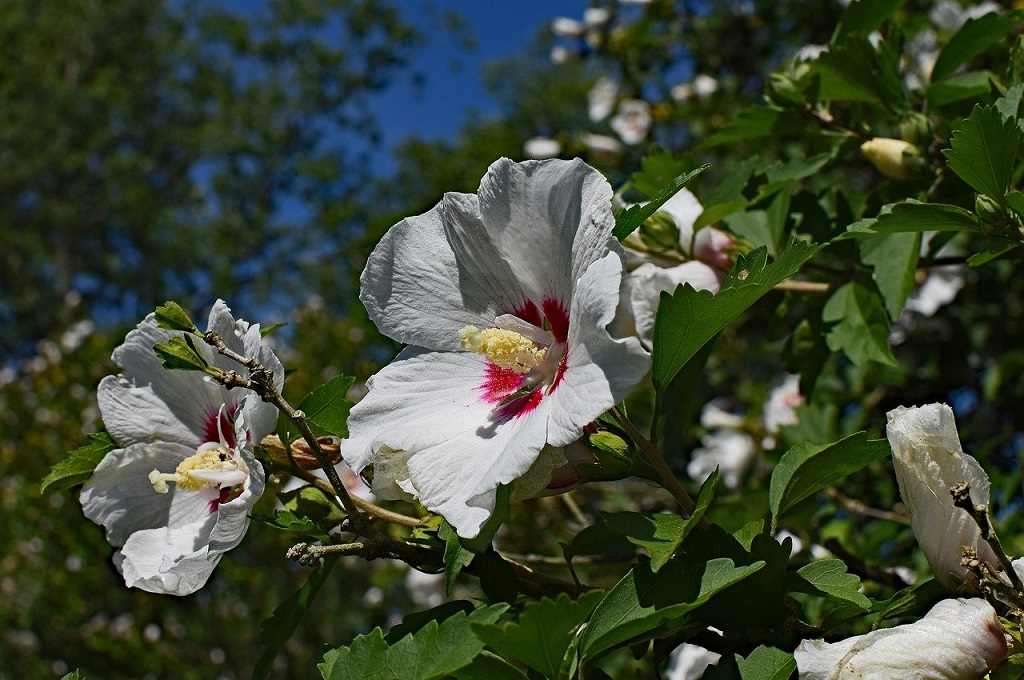
Growing Conditions
- Full Sun to Part Shade
- Perennial in zones 5 to 8
- Large Blooming Shrub
Rose of Sharon is a woody shrub that will grow to seven or eight feet in height and up to 10 feet wide. It puts on plenty of blooms that look very much like hollyhock blossoms.
Not only will it provide nectar-rich blooms, but its thick foliage also makes good habitat for small birds such as hummingbirds and wrens.
9. Culinary Sage
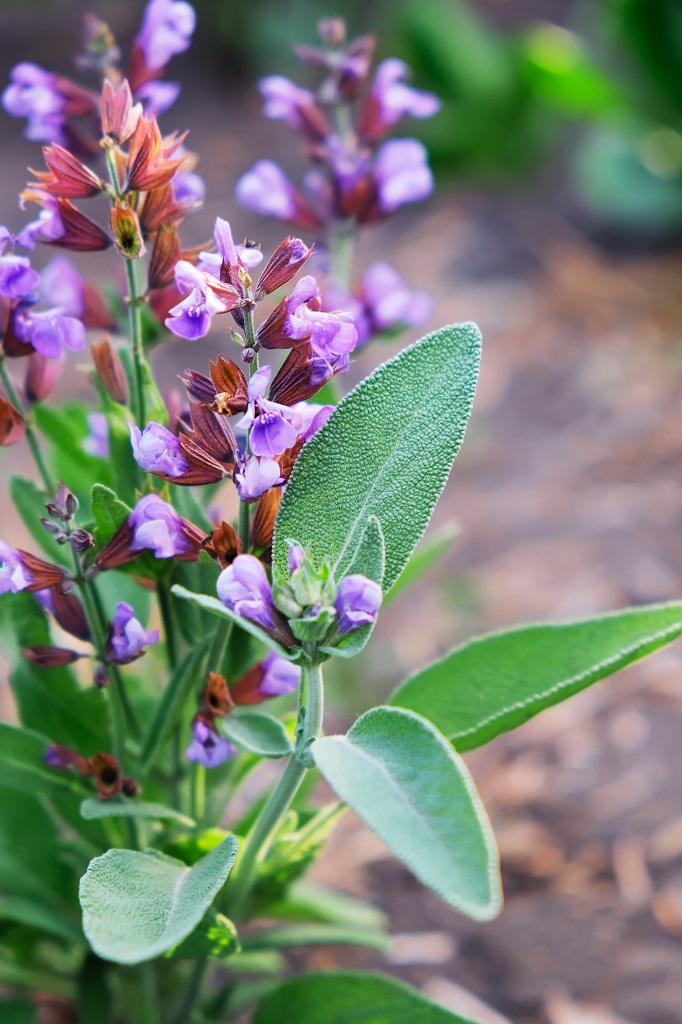
Growing Conditions
- Full Sun
- Perennial
- 12 to 24 inches tall
Sage comes in several varieties, but you can plant culinary sage (Salvia Officinalis) and have a multipurpose woody herb that produces tiny, purple blossoms that will attract bees and hummingbirds, as well as all the sage you will ever need to flavor chicken or turkey.
10. Zinnias
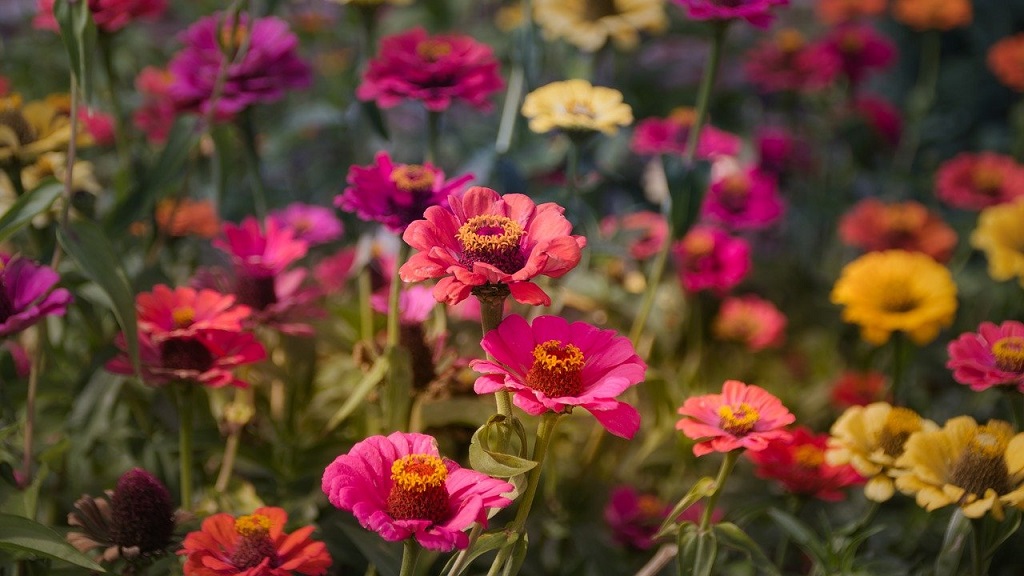
Growing Conditions
- Full Sun
- Self Seeding Annual
- Varying Heights from 10 inches to 5 feet tall depending on variety
Zinnias are an old-fashioned cut-flower variety that is sometimes used as companion plants in the vegetable garden. They are an annual in most middle to northern states in the United States, but you can easily gather seeds and grow them year after year.
Their multiflora heads are loved by bees as well as hummingbirds and butterflies. They are one of the easiest flowers to cultivate, fast-growing with little need for extensive maintenance.
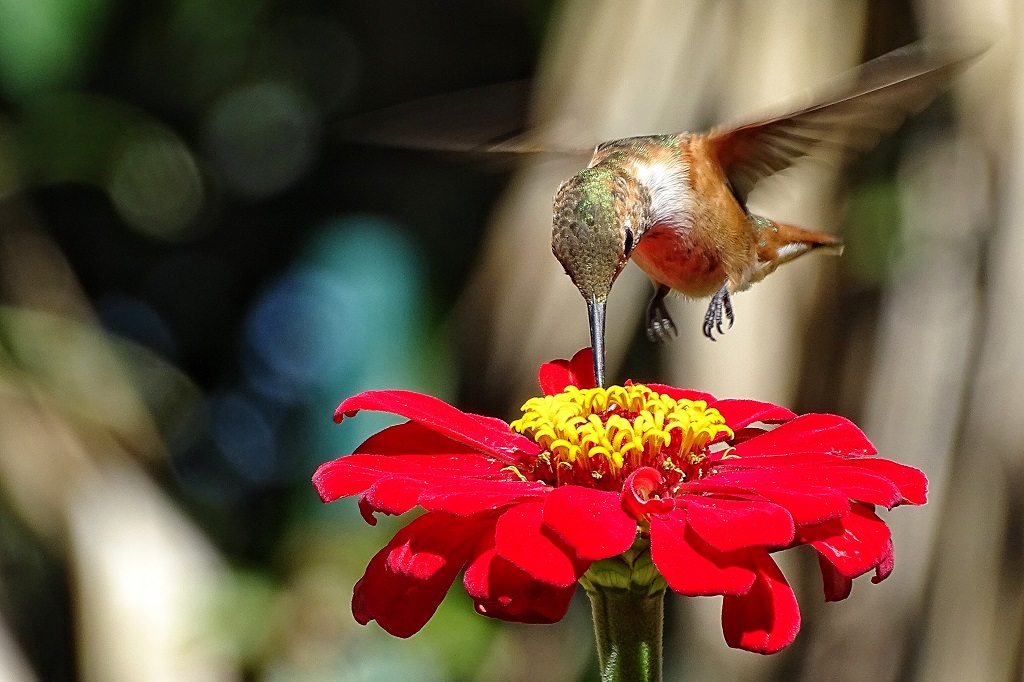
Other Tips For Attracting Hummingbirds to Your Yard
Like all birds, hummingbirds love birdbaths. They are especially partial to moving water and love fountains that produce a light mist.
According to the Audubon Society, hummingbirds enjoy frequent baths, if they don’t have a birdbath handy, they will use the water pools that collect on leaves after a rain.
They need shrubbery where they can hide their nests, and even though it sometimes seems as if they are perpetual motion machines, they like perches where they can rest. Rose of Sharon planted near the walls of your house are ideal for providing shade, perches, and nest space.
You might want to add a nectar dispenser and a fruit fly incubator to ensure that these tiny jewels of the air have plenty of their favorite foods. See our post on the best hummingbird feeders to take a look at our favorites.
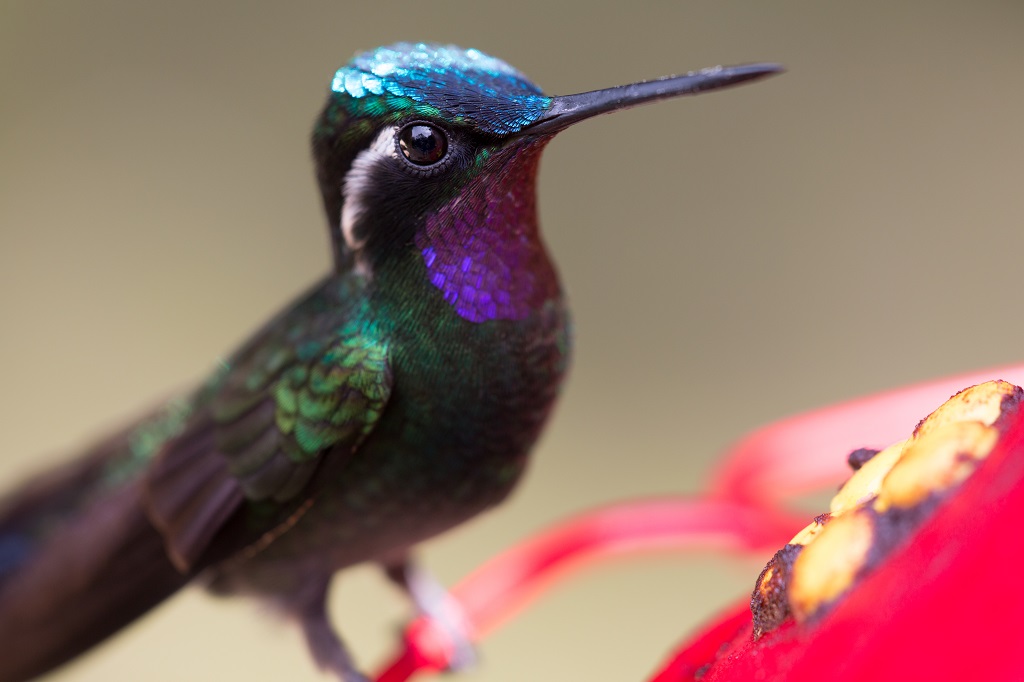
There is nothing more charming than these brilliantly colored tiny fliers as they zip from blossom to blossom. They are more than just ornamental pollinators.
Like Swifts, they are acrobatic flyers and catch many tiny insects on the wing. Even if this were not true, hummingbirds need no excuse. They are beautiful and unique.
Like it? Pin It!
